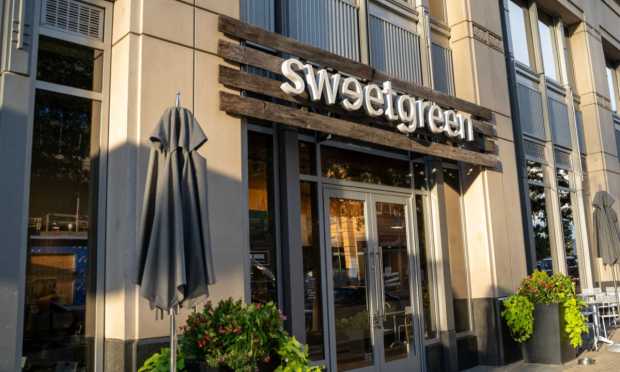Sweetgreen Says Remote Work Might Be Good for Workers but It’s Bad for Business

As employees continue to opt for remote or hybrid work situations, restaurants that rely on city center workers’ workday lunch spend are left in a lurch.
Los Angeles-based fast-casual chain Sweetgreen, which has more than 160 locations across the United States, announced Tuesday (Aug. 9) a revised financial outlook for the year, which included cutting expectations of same-store sales increases to 13% to 19%, where previously the brand had expected 20% to 26%.
Sweetgreen CFO Mitch Reback noted on a call with analysts the chain’s “erratic urban recovery,” highlighting the consequent “sales growth lag,” though he maintained that the company is “confident” in these urban locations’ recovery in the long run. Given this lag, Sweetgreen is attempting to shift its mix from city-center locations toward more residential neighborhoods, opening new stores in suburban areas.
“At the end of 2019, our footprint was 65% urban, 35% suburban,” Reback said. “Today it’s 50/50. At the end of 2019, our urban restaurants had an AUV of 3.1 million and our suburban restaurants had an AUV of 2.7 million. At the end of the second quarter of 2022, AUVs flipped urban SUVs are now 2.7 billion and suburban EVs are 3.1 million.”
Indeed, findings from the February edition of PYMNTS’ ConnectedEconomy study, The ConnectedEconomy™ Monthly Report: Working In The “Whenever, Wherever” Office, which drew from a survey of around 2,500 U.S. consumers, reveal that 51% reported splitting split their workdays between working remotely at home and working at the office. Fourteen percent, meanwhile, said they were exclusively working remotely, leaving only 35% of consumers going into work on site every day.
Related news: Report: Remote is How Two-Thirds of US Professionals Now Work
Regarding rapid food inflation, the company insisted that, given that its menu prominently features plant-based items, it is protected from some of the volatility that comes from fluctuating meat prices. Reback noted that the only price change that the company foresees in the near future is perhaps an increase on chicken.
Still, the looming recession may have consumers less willing to pay the premium for a salad bowl, when they could be bringing lunch from home or opting for a lower-priced restaurant chain.
“As you all know, we’re in kind of choppy waters from a macroeconomic perspective,” Sweetgreen Co-founder and CEO Jonathan Neman said on the call. “Having said all that, extreme confidence in the model long term. … We see a lot of this as a as a little bump in the in the macro environment.”
Consumers are feeling the impact of food price increases even more acutely than the actual rate of inflation. The Consumer Price Index for All Urban Consumers (CPI-U), reported by the U.S. Bureau of Labor Statistics (BLS) earlier this month, revealed that food prices rose 10.4% year over year, food at home (i.e., grocery) prices rose 12.2%, and food away from home (i.e., restaurant) prices rose 7.7%.
Yet, a national online study of 3,783 U.S. consumers conducted by PYMNTS last month revealed that Americans report paying 20% to 30% more for retail and grocery purchases and to eat at restaurants.
Read more: Why Retailers Should Worry About Inflation but Dread the Wealth Effect
